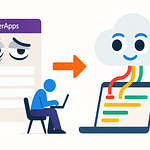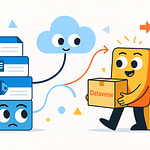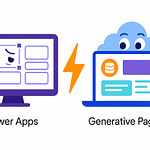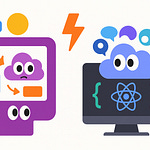The Data Cleanup Trap
You think your job is analysis. It isn’t. It’s janitorial work with better branding. Every spreadsheet in your life begins the same way—tabular chaos pretending to be data. Dates in six formats, currencies missing symbols, column headers that read like riddles. You call that analysis? That’s housekeeping with formulas.
Let’s be honest—half your “reports” are just therapy for the punishment Excel inflicts. You open the file, stare into the abyss of merged cells, sigh, and start another round of “Find and Replace.” Hours vanish. The terrible part? You already know how pointless it is. Because by the time you finish, the source data changes again, and you’re back to scrubbing.
Every minute formatting cells is a minute not spent extracting insights. The company pays you to understand performance, forecast trends, and drive strategy. Yet most days you’re just fighting the effects of institutional laziness—people exporting garbage CSVs and calling it “data.”
Here’s the twist: Excel Copilot isn’t a cute chatbot for formulas. It’s the AI janitor you’ve been pretending to be. It reads your mess, understands the structure, and cleans it before you can reach for the “Trim” function.
By the end of this, you’ll stop scrubbing like an intern and start orchestrating intelligent automation. Oh—and we’ll eventually reach the single prompt that fixes eighty percent of cleanup tasks… if you survive the upcoming CSV horror story.
Section 1: Why Excel Is a Chaos Factory
Excel was never meant to be the world’s data hub. It was built for grids, not governance—a sandbox for accountants that somehow became the backbone of global analytics. Small wonder every enterprise treats spreadsheets like a duct-taped database. Functional? Yes. Sustainable? About as much as storing medical records on sticky notes.
The flaw starts with human nature. Give an average user a column and they’ll type whatever they like into it. December 3 becomes 03-12, 12/3, or “Dec third.” Some countries reverse day and month; others write it longhand. Excel shrugs, pretends everything’s fine, and your visuals later show financial spikes that never happened.
Those invisible trailing spaces—oh yes, the ghosts of data entry—break lookups, implode joins, and silently poison automations. You think your Power Automate flow failed randomly? No. It met a rogue space at the end of “Product Name” and gave up.
Then there’s the notorious mixed-type column. Numbers acting like text. Text pretending to be numbers. A polite way of saying: formulas stop working without warning. One cell says “42,” the next says “forty-two.” You can’t sum that; you can only suffer.
Every inconsistency metastasizes as your spreadsheet ages. Excel tries to please everyone, so it lets chaos breed. That flexibility—the ability to type anything anywhere—is both its genius and its curse.
Now, extend the problem downstream. Those inconsistencies aren’t isolated; they’re contagious. A Power BI dashboard connected to bad data doesn’t display trends—it manufactures fiction. Power Automate flows crumble when a column header changes by one character. Fabric pipelines stall because one table used “CA” and another wrote “California.”
I once saw a manager spend three days reconciling regional sales. She was convinced her west-coast numbers were incomplete. They were fine; they were just labeled differently. “California,” “Calif.,” and “CA” politely refused to unify because Excel doesn’t assume they’re the same thing. By the time she found it, the reporting deadline had passed and the leadership team had already made a decision based on incomplete figures. Congratulations—you’ve automated misinformation.
Excel’s architecture encourages this disaster. It has no schema enforcement, no input validation, no relational discipline. You can design a formula to calculate orbital mechanics but still accidentally delete a quarter’s worth of invoices by sorting one column independently. It’s like giving a toddler algebra tools and then acting surprised when the living room explodes.
These flaws wouldn’t matter if Excel stayed personal—one analyst, one sheet. But it became collaborative, shared via OneDrive, circulated through Teams, copied endlessly across departments. Each copy accumulates its own micro‑mutations until no one remembers the original truth. The spreadsheet becomes a family heirloom of errors.
And then, in desperation, we export the mess into Power Platform, expecting automation to transcend lunacy. Spoiler alert—it doesn’t. Flows break, connectors fail, dashboards lie, and you blame the platform instead of the real culprit: the spreadsheet habit.
That’s the swamp Copilot was trained to drain. It doesn’t judge your column naming skills or your inconsistent capitalization; it just reads the chaos, classifies the problems, and offers to fix them. Excel remains wonderfully permissive—but now, finally, it has a sentient assistant that understands the consequences.
The next time you stare at a corrupted CSV thinking, “Why does this keep happening?” remember: you’re not cursed—you’re using a tool designed for flexibility in a world that now demands precision. And Copilot’s job is to convert that flexibility into order before it leaks downstream into every automated nightmare you’ve ever unleashed.
Section 2: Enter Copilot — Excel’s AI Janitor with a PhD
Enter Copilot—the only coworker in your department who doesn’t sigh when opening a spreadsheet. This isn’t a plug‑in or a chatbot doing party tricks; it’s a full‑time analyst embedded in Excel’s bloodstream. While you’re still scrolling through columns wondering why C looks suspiciously like B, Copilot’s already mapped the logic, traced dependencies, and prepared a surgical checklist of what’s broken.
Think of Copilot as an AI janitor with a PhD in pattern recognition. It doesn’t just mop up duplicated rows—it reads the history of your mess and understands why it happened. Because Copilot sits inside your Microsoft 365 environment, it sees the bigger context: the CSV you saved in OneDrive, the list you exported from a SharePoint table, even the numbers that came through last week’s Outlook attachment labeled “final_final3.xlsx.” It draws threads between them without you dragging in references or imports.
Traditional Excel users shuffle data in with fear, hoping it aligns. Copilot knows that integration is safest when native. It pulls intelligently across OneDrive, SharePoint, and Teams, so your source never detaches from its environment. You don’t “import;” you delegate. The moment you say, “Summarize last quarter’s revenue by region from sales‑pipeline.xlsx,” Copilot knows which file you mean, because it’s living in the same digital apartment complex.
Now, the real misunderstanding begins with its two personalities: Chat mode and App Skills mode. The chat panel is where you converse—ask questions, request summaries, probe for patterns. It’s conversational, diagnostic. You can type “show orders above ten thousand” and Copilot will politely tell you which rows qualify. But that’s all it does—it observes. The App Skills side, however, is operational. That’s where Copilot actually edits your spreadsheet: adds formulas, applies formatting, creates tables, runs transformations. Most users linger in chat, wondering why nothing changes. They’re basically talking to their analyst and ignoring the janitor holding the tools.
Flip the switch to App Skills, and the gloves come off. Suddenly, your natural language becomes executable logic. Say, “Highlight orders over ten thousand,” and it rewrites your conditional formatting rule, generating the equivalent of nested IF statements faster than you can say “syntax error.” Under the hood, Copilot converts your phrasing into exact Excel formula syntax—clean, validated, and target‑matched. You get the mathematical outcome, minus the ritual suffering.
Picture Copilot reading your Excel file like a forensic accountant debriefing a crime scene. “Ah, column headings misaligned, date serialization inconsistent, numeric strings formatted as text.” With infinite patience, it corrects them one by one. Every correction is previewed before application; you remain the supervisor. Copilot proposes, you approve. It’s like watching an intern perform at doctoral level—and asking permission first.
Here’s the trick most users miss: because Copilot sits atop Microsoft Graph, it understands the semantics of your data. “Revenue,” “Region,” and “Date” aren’t random words; they’re identified entities. So when you ask it to “normalize all region names,” it doesn’t merely align spelling—it recognizes the organizational geography underpinning your tenant. That’s why it’s more than autocomplete; it’s context‑aware auditing.
But the true power? Not understanding you—it’s obeying you. When you direct it, your spreadsheet becomes programmable through thought alone. You stop interpreting formulas and start issuing orders. The janitor becomes the executor, the mess becomes structure, and Excel—miraculously—behaves like it graduated from chaos management school. The next section shows what happens when you finally trust it to clean unattended.
Section 3: The Three Commands That End Manual Cleanup
Let’s commit heresy—delegate the cleanup. You’ve spent years believing spreadsheets require human penance. They don’t. Copilot is perfectly capable of tidying your data while you sip coffee and rehearse pretending to work. The trick is giving it the right orders, not vague pleas. Three categories of commands eliminate almost every manual cleanup ritual you still cling to.
First, the nuclear option: Normalize Everything. When your dataset looks like the aftermath of an international keyboard convention, this is the purge command. You say, “Standardize all date columns to YYYY‑MM‑DD,” and Copilot doesn’t flinch. It scans for inconsistent date formats, hidden text entries masquerading as dates, and stray cells where someone wrote “Next Tuesday.” Behind the scenes, it rewrites those cells into structured ISO format while maintaining cell integrity. No more sorting disasters where “Feb” hides between August and September. It reconverts your columns at the type level—numbers become numbers, text becomes text.
Think of it as data therapy. Copilot listens to your schizophrenic spreadsheet, nods patiently, and says, “You’re safe now. Everyone will use one format.” It even catches the anomalies you wouldn’t think to check: leading zeros in postal codes, stray spaces trailing product names, capitalization inconsistencies that break lookup tables. Each anomaly is quietly corrected, and suddenly formulas that failed for months start behaving. For the first time, your sheet and reality agree on what day it is.
Once normalization brings sanity, command two begins the audit: Validate and Flag Outliers. Manual reviewers spend hours scanning for anomaly rows—orders with giant totals or missing shipments. Copilot treats that like breathing. Prompt it with, “Highlight all rows with totals above ten thousand that don’t have shipping data.” Instantly, the Excel canvas erupts with colored logic. Copilot constructs conditional‑formatting rules algorithmically, driven by actual pattern detection rather than manual filters. Behind that quick sparkle animation sits a cascade of formula generation: IF, ISBLANK, GREATER THAN—assembled flawlessly.
It’s not guessing; it’s building a diagnostic layer. You preview every suggestion. Green highlights signal compliance, red signals data debt. The spreadsheet morphs into an audit screen where exceptions glow visibly. This is where Power Automate benefits—connected flows no longer choke on garbage because you’ve validated before export. Each flagged cell is a pre‑emptive insurance policy against automation collapse.
Picture it: where you once scrolled endlessly through columns hunting numerical anomalies, you now issue one sentence, and Copilot does statistical sniffing worthy of a forensic analyst. Need something stricter? Ask it to “Highlight all transactions whose totals deviate more than two standard deviations from the mean.” It calculates the baseline, flags the extremes, and you look like a compliance professional instead of a desperate Excel survivor.
Now we reach the third and most transformative command: Transform for Integration. Cleaning is fine, but your goal isn’t cleanliness—it’s interoperability. You want sheets that integrate seamlessly with Power BI, Power Apps, or Fabric. So you prompt: “Create a summary table of total revenue per normalized region and export for Power BI.” Copilot analyzes schema alignment, aggregates values by region, and preps a compact table ready for downstream ingestion.
Remember, this isn’t copy‑paste automation. It rewrites the aggregation logic in native Excel—internally constructing a pivot calculation or a grouped SUMIFS table—then formats headers to comply with Power Platform source expectations. You preview before apply. Copilot suggests; you decide. The balance of power remains in your favor, yet your effort is practically zero. Integration becomes a controlled conversation, not a long weekend of spreadsheet archaeology.
Use this transform phase not just for exports, but for pre‑modeling insight. You can ask for derived columns—profit margins, tax percentages, category rollups—without ever writing a formula. Copilot creates them and explains the math so you can verify the logic that would take you twenty clicks in the Ribbon. It’s like having a bilingual interpreter who speaks both Business English and Excelese, translating directly between them without complaint.
Let’s pause for a micro‑story. Last quarter an analyst in a retail division inherited survey data from three regions, each using different headings for the same variable. “Customer satisfaction,” “Satisfaction score,” and the charming “Client Feelz.” Normally that meant two hours of tedious text‑to‑category transformations. Copilot resolved it in one interaction. The analyst typed, “Combine customer feedback fields and normalize response labels to a common five‑point scale.” Moments later, the new column appeared, harmonized and validated. She saved four hours and a mild nervous breakdown. Power Apps consumed the output without a single error. She now believes in machine magic; honestly, who can blame her?
Behind these miracles lies structured logic. When you create summary tables, Copilot doesn’t merely guess at joins—it references your column metadata, ensures column IDs match, and even warns you when regional totals don’t align with organizational hierarchies stored in Microsoft Graph. It anticipates integration pitfalls before they sabotage your pipeline. You’re not formatting anymore; you’re orchestrating data choreography with an assistant fluent in analytics.
The implications stretch beyond neat cells. Once your sheet follows consistent formatting, every Power Automate trigger, every Power BI refresh behaves predictably. No sudden errors, no “column mismatch” alerts. Workflows run cleaner because Copilot enforces a pre‑automation quarantine where bad data goes to be sanitized. Essentially, it assumes the role Excel should have played decades ago: the quality gatekeeper.
Normalize everything. Validate exceptions. Transform for integration. These three commands aren’t macros—they’re the replacement for macros. They remove the muscle memory of suffering that once defined spreadsheet maintenance.
And yes, there’s a deeper payoff. As you clean through intelligence rather than repetition, you realize something unsettling: you were never the analyst; you were the bottleneck. Copilot reveals that every manual operation you defended as “quality assurance” was just friction waiting to be automated. Now, quality control scales effortlessly.
Fine. Your sheet is pristine, the formulas align, the regions reconcile, and your dashboard finally tells the truth. You might feel uneasy—what happens when there’s nothing left to scrub? Relax. That’s where the next stage begins. Because having data that’s consistent is quaint; having data that thinks is revolutionary. Which brings us to the next question—can your spreadsheet analyze itself? Time to find out.
Section 4: From Clean Data to Smart Data
You thought clean data was the endgame. It isn’t. Clean data is just well‑behaved noise. The next leap is giving it cognition—asking it to think for itself. Excel Copilot doesn’t stop at polishing your columns; it starts connecting your patterns. Once your chaos is subdued, Copilot slips quietly into analyst mode, reading your dataset the way a chess engine studies openings: absorbing history, predicting consequences, and pointing out combinations you didn’t know existed.
For instance, suppose your spreadsheet holds thousands of customer comments from an online survey. Normally, you’d export those paragraphs to a separate analytics tool, beg for sentiment tags, and then merge the results back—an exercise in self‑inflicted pain. But now you say, “Add a column analyzing sentiment from customer feedback.” Copilot parses the text using its embedded model and returns a scale—Positive, Neutral, Negative—complete with color‑coded recommendations. It’s like outsourcing emotional intelligence to a machine therapist that never complains.
The revelation isn’t that Copilot can label moods. It’s that Excel finally transitioned from arithmetic to language comprehension. Those cells of commentary become measurable variables—quantifiable emotions you can chart, correlate, and automate. With one column of AI‑generated sentiment, you can drive a Power BI visualization showing which regions have the unhappiest customers or feed a Power Automate flow to trigger escalation emails when negative responses exceed thresholds. The spreadsheet stops being static; it behaves like part of your operational nervous system.
And then there’s its deeper trick: Think Deeper. When you invoke that prompt, Copilot switches into Python‑backed analysis mode, generating a companion sheet full of diagnostic insight. You don’t see the Python code—thankfully—but you reap its intellect. It validates column names, cleans incompatible values again, and begins running distribution checks, correlation matrices, even segmentation models. Where traditional Excel offered inferiority complexes about “advanced analytics,” Copilot simply performs them in situ. You stay in your spreadsheet; it summons analytical horsepower from the same cloud that runs your enterprise.
Think about what that means: the same workbook that once failed to align currency symbols is now executing statistical clustering. Copilot narrates the results plainly, not in hieroglyphs—“Orders from northern regions show 18% higher average value due to premium shipping tiers.” That sentence is comprehension, not computation.
Now, here’s the connection most people miss: every insight Copilot produces can be handed directly to Power BI or Power Automate with no re‑export. Because it existed in the Microsoft 365 ecosystem from origin to analysis, there’s no brittle CSV relay, no “please reupload to SharePoint.” When you enable those tools, they read the same semantic model Copilot just refined. Your integrated architecture finally behaves like one brain instead of a collection of mismatched hemispheres.
Essentially, Excel graduates from spreadsheet to cortex. Raw data flows in, Copilot performs neural processing, and outputs structured intelligence ready for visualization or automation. It’s not a leap of faith; it’s a shift of role. Where you once acted as interpreter between systems, Copilot now handles translation natively. Your only job is to ask interesting questions.
Take another example. You type, “Segment orders by region and shipping method to identify logistical patterns.” Within seconds, Copilot groups, charts, and interprets. It identifies that coastal states prefer express shipping while inland regions dominate budget delivery. Previously, that took pivot tables, filtering, cross‑referencing—now it’s conversational statistics.
The subtle genius behind this is how Copilot contextualizes your query. It’s aware that “region” isn’t just a text column; it maps to geographical hierarchies recognized in Microsoft Graph. So when you say, “Compare west to east performance,” it doesn’t treat them as arbitrary words but as coordinate clusters. Meaningful relationships, not string literals.
And yes, it retains humility. Every transformation, every insight appears in preview. You decide what becomes permanent. Copilot is your overqualified intern that won’t publish a chart until you nod.
The stage has changed. Cleanup was mechanical; analysis is conceptual. Your spreadsheet used to obey formulas; now it debates evidence. Once you grasp that, you realize you’re no longer “preparing” data—you’re conversing with it. All those years cleaning reflected distrust: you never believed Excel could reason. But with Copilot infused, reasoning is the default state.
So, your rows are clean, your insights self‑generated, your pipeline self‑aware. Congratulations—you’re standing at the edge of redundancy. Which brings us neatly to the uncomfortable truth: if Copilot can maintain, validate, and interpret your data, what exactly are you doing still formatting CSVs? Keep listening; it’s time to retire the mop entirely.
Section 5: The End of the Manual Phase
Here’s the epilogue you didn’t expect: the era of manual cleanup is over, and you’re the last person holding the broom. We began with chaos, taught Excel manners, and ended with cognition. Now the real evolution begins—Copilot as the gatekeeper of automation, not a gadget within it.
Look at the lineage. First came spreadsheets—human entry points into data. Then macros, enabling primitive automation. Then Power Platform, dissolving repetitive labor across cloud services. Copilot completes the arc: it eradicates the pre‑automation phase. You no longer prepare data so Power BI and Power Automate can function; Copilot delivers it ready. The pipeline now runs raw → Copilot normalization → Power Platform orchestration. The janitor became the transporter.
If your workflow still starts with “clean the CSV,” congratulations—you’re living in 201. Today, cleanup is an automatic pre‑flight check. Copilot standardizes formats on ingestion and alerts you before corruption spreads. Conditional highlights, standard deviations, validation summaries—these run with one prompt the moment data lands. The tools beneath you changed; your habits haven’t caught up.
Treat Copilot as a preprocessor, not a crutch. People misuse it like spell‑check—fixing errors after they happen. Smart teams embed it at the beginning of every dataset’s lifecycle. They dictate intake rules through Copilot prompts: “Validate all region names,” “align currency symbols,” “detect nulls in revenue.” Once codified, those prompts become natural‑language guardrails across departments. Data arrives standardized by design. No heroics required.
I’ve seen automation‑first departments adopt this approach like doctrine. Marketing, finance, operations—they share prompt libraries the way developers share APIs. One line—“Normalize customer IDs, remove blanks, and summarize orders by type”—runs nightly through Power Automate. Not one human hand opens Excel; Copilot handles conformity, Power BI consumes truth, and dashboards update before managers arrive. The cleanup budget evaporates. In its place: time for strategic thinking.
That’s the existential relief no one tells you about. Analysts rediscover analysis. The quiet satisfaction of exploring causation instead of correcting commas. The work feels cleaner because it is cleaner. And when errors appear, they’re anomalies worth investigating, not typos worth cursing.
But we both know mindsets lag behind tools. Somewhere, right now, someone is still manually deleting duplicates because “that’s how we’ve always done it.” Tradition—meet automation. Because Copilot doesn’t just accelerate work; it redefines competence. Refusing to use it is like printing PowerPoint slides for every meeting and insisting that’s “the reliable way.”
Here’s the kicker tying back to that open loop from our start—the “eighty‑percent fix.” The single prompt that dissolves the majority of setup chores: “Clean all column headers, remove duplicates, and align formats across sheets.” That line alone neutralizes most operational pain and clears the runway for integration. The rest—stray logic, reconciling abbreviations—Copilot finishes while you pretend to take credit.
What follows is freedom, but also accountability. Once AI assumes drudgery, your value migrates to interpretation. You’re not the data janitor anymore; you’re the data conductor. Instead of sweeping errors, you orchestrate intelligence across systems.
And that’s precisely where this story closes. Copilot didn’t make Excel magical—it made it mature. You’re witnessing the last gasp of the manual phase, replaced by a discipline where cleanup, validation, and insight exist in one continuous, intelligent pipeline.
Efficiency isn’t accidental; it’s designed. You can cling to outdated rituals, or you can let Copilot maintain hygiene while you finally think for a living. Either choice defines your era. The platforms already moved on. The question is—have you?
Conclusion: Efficiency Isn’t an Accident
Let’s be clear—you were never cleaning data; you were preserving inefficiency. Copilot didn’t just lighten your workload; it eliminated an entire species of busywork. Every correction it automates turns chaos into context and restores Excel to what it was supposed to be: an analytical instrument, not a spreadsheet laundromat.
The essential shift isn’t technological; it’s psychological. Efficiency isn’t magic—it’s discipline expressed through automation. Copilot doesn’t think for you; it clears the mental congestion blocking actual thought. Analysts who once measured value in hours spent “fixing” now measure it in decisions made. That’s the evolution.
Picture your workflow as an assembly line. Before, you polished each bolt by hand. Now Copilot polishes automatically, and you decide which machines to build next. The more you delegate precision, the more strategic your time becomes. That’s not laziness; that’s leverage.
So the next time you open a dataset full of missing values and tangled formats, resist the reflex to reach for formulas. Ask Copilot instead. You’ll save time, yes—but more importantly, you’ll preserve clarity. The analyst who still scrubs manually is competing in a race already finished.
Copilot isn’t a helper; it’s the new hygiene standard for data literacy. Treating it as optional is like refusing spell‑check because you “enjoy proofreading.”
Take the hint. Stop cleaning. Start commanding.
Subscribe and we’ll dismantle the next myth—why Power BI dashboards lie even when your data doesn’t. Efficiency isn’t luck. It’s Copilot, correctly deployed.










